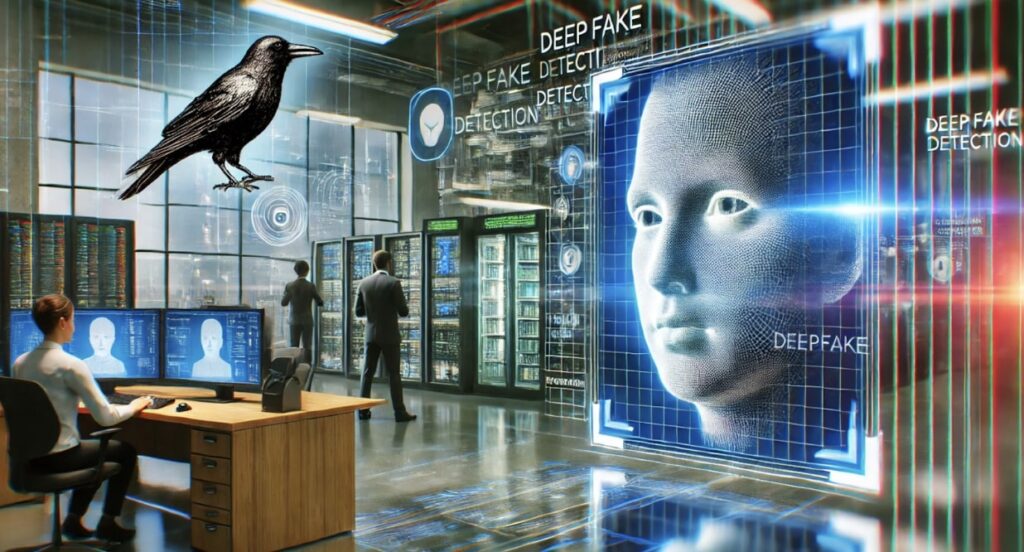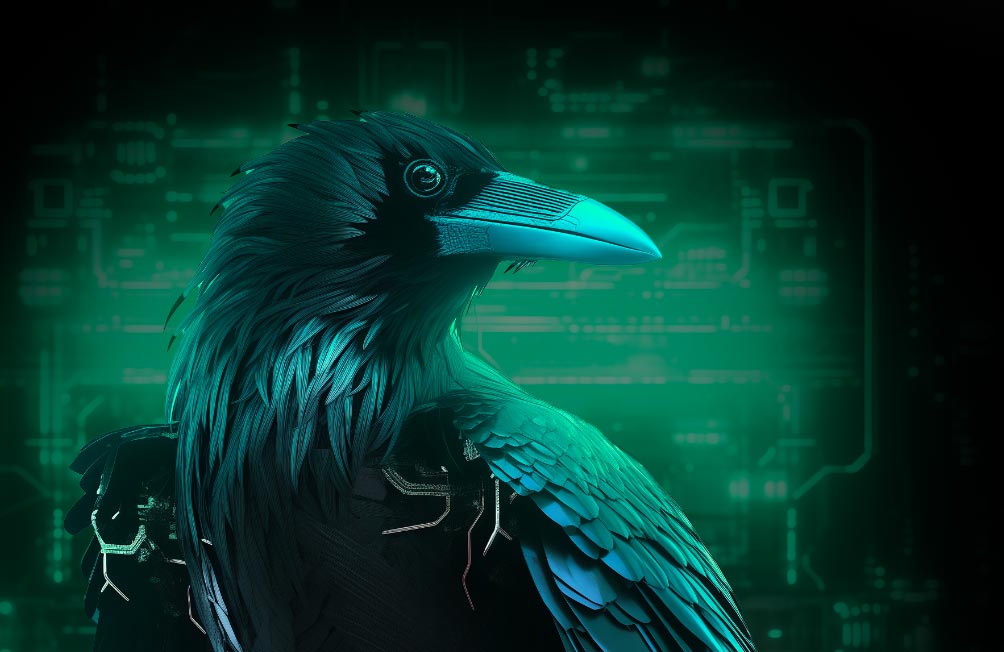Deepfake Detection Software for Business: Protecting Against Digital Threats
Deepfake images and videos pose a growing threat to businesses, impacting reputation, finances, and security. Learn how deepfake detection software can help protect against AI-generated forgeries and maintain digital integrity.

Deepfakes are highly realistic, AI-generated images, video or audio content manipulating an individual’s likeness or voice. This technology has advanced rapidly, allowing for hyper-realistic forgeries of people saying or doing things they never actually did. Initially developed for entertainment and research purposes, deepfakes have become an emerging threat to businesses and individuals.
LEARN MORE: What Is Narrative Intelligence?
The Growing Threat
The risks deepfakes pose to businesses are no longer hypothetical. From reputational damage to financial fraud and security breaches, deepfakes represent a multi-faceted threat that can undermine trust, disrupt operations, and expose vulnerabilities. The ease with which these fakes can be produced—and their increasing sophistication—means that no organization is immune to their potential impact.
Importance of Detection
Detecting and mitigating deepfakes is now a critical aspect of modern digital security. The threat landscape becomes increasingly complex as more businesses rely on digital communication, transactions, and public-facing content. Early detection and rapid response to deepfakes are essential in protecting brand reputation, preventing fraud, and maintaining the integrity of business operations.
Understanding Deepfakes
What Are Deepfakes?
Deepfakes are created using artificial intelligence and machine learning techniques, particularly a subset of AI called Generative Adversarial Networks (GANs). GANs enable machines to generate synthetic media nearly indistinguishable from real images, video, or audio recordings. This technology analyzes large datasets of real images, voices, or videos and learns how to replicate them, often with chilling accuracy.
Common Use Cases in Business
While deepfakes are typically associated with nefarious activities, they can have legitimate uses in business, such as marketing, entertainment, and corporate training. However, the malicious use of deepfakes is a growing concern. In some cases, deepfakes have been used to impersonate executives in phishing attacks, manipulating employees into transferring large sums of money. They have also been used to spread false information, damaging brands and misleading consumers.
The Risks of Deepfakes for Businesses
Reputation and Brand Integrity
A company’s reputation is one of the most significant risks deepfakes pose. Deepfake images, videos, or audio clips misrepresenting a CEO, spokesperson, or prominent figure can cause immediate and lasting damage. If a deepfake circulates widely before it is debunked, a company may face consumer backlash, loss of trust, and significant PR crises that can take months or even years to repair.
Financial Implications
The financial fallout from deepfake attacks can be staggering. For example, in the wake of Silicon Valley Bank’s economic collapse, bad actors leveraged the event to push false or misleading narratives, including conspiracies about government intervention and unfounded claims about the causes of the collapse. These narratives not only distorted public perception but also posed significant risks to markets and businesses, underscoring the growing influence of narrative attacks on financial systems. The post calls for more robust monitoring and response strategies to mitigate these risks in the future.
The events surrounding the 2021 GameStop stock surge highlight how online communities, social media, and narrative manipulation can play a pivotal role in influencing market dynamics. Retail investors coordinated on platforms like Reddit’s WallStreetBets, which fueled the stock’s unprecedented rise and caused significant losses for institutional investors. The post emphasizes the risks of narrative-driven market movements, which can distort valuations and create volatility, calling for a more nuanced understanding of how digital platforms and sentiment influence financial markets.
Security Vulnerabilities
Deepfakes also expose security vulnerabilities. They can bypass authentication measures, such as voice or facial recognition software, which many businesses rely on for secure access to systems and sensitive data. Additionally, deepfakes can manipulate employees into making unauthorized decisions, such as approving fraudulent transactions or accessing restricted areas.
How Deepfake Detection Software Works
Technology Behind Detection
Deepfake detection software uses AI and machine learning to identify patterns or anomalies in images, video, and audio files. These tools analyze subtle inconsistencies in movement, sound, lighting, or pixelation that are often undetectable to the human eye. Machine learning algorithms are trained on large datasets of real and fake media, enabling them to improve their ability to detect new and evolving deepfakes continuously.
Key Features of Detection Software
- Real-time detection: Allows businesses to scan content as it’s being shared or uploaded, reducing the risk of a deepfake going viral before it’s identified.
- Facial recognition helps cross-check the authenticity of an image or video footage by comparing it with known, legitimate footage of an individual.
- Anomaly detection: Flags unusual or unnatural movements in the video, such as mismatched lip-syncing, unnatural blinking, or inconsistencies in facial expressions.
Implementing Deepfake Detection in Your Business
Assessing Your Risk Level
Before implementing deepfake detection software, businesses need to assess their level of exposure to this emerging threat. Key considerations include the organization’s size, the importance of its brand, The visibility of its executives, the industry it operates in, and the public-facing content it produces. For example, companies with high-profile executives, those in financial services, or those heavily reliant on digital media are at greater risk of deepfake attacks.
Choosing the Right Software
When selecting deepfake detection software, businesses should look for scalable solutions that offer greater protection against narrative attacks through an AI-based Narrative Intelligence Platform. Essential factors to consider include:
- Ease of integration: Can the software be easily integrated into current systems detection software, including social media monitoring and threat intelligence?
- Scalability: Will the software grow with your business as the threat of deepfakes evolves?
- Support: Does the provider offer technical support and updates to ensure continued effectiveness against new deepfakes?
Case Studies: Businesses Fighting Back Against Deepfakes
Success Stories
Several businesses have successfully implemented deepfake detection software to safeguard their operations. For instance, a large financial institution faced a deepfake scam targeting its senior executives. By deploying real-time detection tools, they prevented a multi-million-dollar fraud attempt, stopping the transfer of funds before the deepfake was even made public.
Lessons Learned
Key takeaways from businesses that have fought back against deepfakes include:
- Early detection is critical: The faster deepfake content is identified, the lower the risk of widespread damage.
- Employee training is essential: Businesses should train their teams to recognize the signs of deepfake scams and verify suspicious requests or communications.
The Future of Deepfake Detection
Evolving Threat Landscape
As AI technology improves, so will the sophistication of deepfakes. Businesses must be prepared for a future where deepfakes become increasingly realistic and more challenging to detect. Advances in 3D modeling, voice cloning, and real-time manipulation mean that detection technologies will need to evolve just as rapidly to stay ahead of the threat.
Advancements in Detection Technology
Deepfake detection software will continue to improve in response to the growing threat. Future advancements may include:
- Improved AI capabilities: More powerful algorithms that can detect even the most subtle anomalies in deepfake content.
- Industry-wide standards: Creating universal benchmarks for detecting and verifying digital media authenticity.
- Cross-platform integration: Tools that work seamlessly across social media and threat intelligence platforms, enabling businesses to monitor content in real time across all digital touchpoints.
The Role of Regulation
Governments and regulatory bodies are beginning to take action against the rise of deepfakes. In the coming years, we expect more regulations to hold individuals and organizations accountable for creating and distributing deepfake content. Businesses must stay informed about these developments and comply with new standards and laws.
Reiterate the Importance of Vigilance
Deepfakes represent a growing threat to businesses, with the potential to cause significant reputational, financial, and operational harm. Vigilance is key—detecting and responding to deepfake threats before they cause damage should be a priority for any organization in today’s digital world.
Call to Action
To protect your business, assess security measures and consider investing in deepfake detection software. With the right tools and strategies, you can stay ahead of this evolving threat and safeguard your brand, employees, and customers.
Q&A – Ask Yourself And Your Team These Questions
What are deepfakes, and why are they dangerous for businesses?
Deepfakes are AI-generated images, videos, or audio files that mimic real people. They can damage businesses’ reputations, lead to fraud, and cause security breaches.
How does deepfake detection software work?
It uses AI and machine learning to identify inconsistencies in images, video, or audio files that indicate manipulation.
What are the costs associated with implementing deepfake detection?
Costs vary depending on the size of the business, the level of risk, and the software provider. However, the cost of prevention is significantly lower than the cost of recovering from a deepfake attacks.
The Way Forward – Key Takeaways For Organization Leaders
As a business leader navigating the complex landscape of deepfakes and digital threats, it’s crucial to take proactive steps to protect your organization. Here are four key takeaways to guide your efforts:
Educate yourself and your team: Invest time in understanding the fundamentals of deepfake technology, its potential impact on your business, and the latest detection and mitigation strategies. Encourage your team to stay informed about emerging threats and best practices through regular training and knowledge sharing.
Assess your risk profile: Conduct a thorough assessment of your organization’s vulnerability to deepfake attacks. Consider factors such as your industry, brand reputation, executive visibility, and your data and operations sensitivity. Use this assessment to prioritize your defense efforts and allocate resources effectively.
Implement deepfake detection software: Invest in cutting-edge deepfake detection tools that leverage an AI-based Narrative Intelligence Platform to identify manipulated media in real-time. Look for solutions that integrate seamlessly with your existing security infrastructure and scale to meet your organization’s needs. Regularly update and refine your detection capabilities to keep pace with evolving threats.
Collaborate and stay informed: Engage with technology leaders, industry peers, cybersecurity experts, and government agencies to share knowledge, best practices, and threat intelligence related to deepfakes. Participate in forums, conferences, and working groups to stay at the forefront of the latest deepfake detection and mitigation developments. By working together, we can build a more resilient and secure digital ecosystem for all.
To learn how Blackbird.AI detects deepfake attacks through narrative intelligence, learn more here or book a demo.
Need help protecting your organization?
Book a demo today to learn more about Blackbird.AI.



